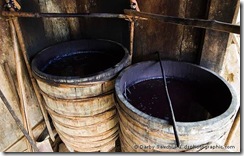Understanding Sulfur Black Dye Applications and Techniques in Textile Industry
The Significance of Sulfur Black Dye in Textiles
Sulfur black dye is a pivotal element in the world of textile dyeing, known for its rich, deep black color and outstanding fastness properties. It has gained popularity in various industries, particularly in the production of cotton and other cellulosic fabrics. This article delves into the characteristics, applications, and environmental considerations of sulfur black dye.
Characteristics of Sulfur Black Dye
Sulfur black dye is derived from sulfur compounds and is characterized by its high stability and resistance to fading. One of the vital features of this dye is its affinity for cellulose fibers, which makes it an ideal choice for dyeing cotton. It is also known for its ability to achieve a deep black shade that is often difficult to obtain with other types of dyes. The dye is soluble in alkaline solutions, which allows for effective penetration into the fabric, ensuring an even and consistent coloration.
One of the significant aspects of sulfur black dye is its excellent light and wash fastness. Fabrics dyed with sulfur black typically exhibit minimal color loss during washing and exposure to light, making them suitable for garments that require durability. Additionally, sulfur black dye is often cost-effective, allowing manufacturers to produce high-quality, black-colored textiles at a lower cost compared to other dye types.
Applications
The applications of sulfur black dye are extensive
. It is commonly used in the clothing industry to produce jeans, trousers, and various types of apparel where a deep black color is desired. The dye is also favored in the production of workwear, uniforms, and textiles used for upholstery due to its durability and resistance to fading.sulfur black dye

Beyond traditional textiles, sulfur black dye has found its way into various sectors, including automotive, where it is used for dyeing carpets and interior fabrics. The longevity and color retention properties of the dye make it ideal for applications where materials are subject to wear and tear. In addition, it plays a role in home textiles, such as curtains and cushions, providing a sophisticated and elegant aesthetic.
Environmental Considerations
While sulfur black dye offers numerous benefits, there are environmental considerations associated with its use. The dyeing process can generate waste products, which may have adverse effects on the environment if not managed properly. The effluents from sulfur dyeing processes can contain hazardous substances, necessitating the implementation of effective wastewater treatment systems.
In recent years, there has been a growing trend toward sustainability in the textile industry. Manufacturers are increasingly seeking eco-friendly alternatives to traditional dyeing processes. Innovations in dyeing techniques, such as low-water and low-energy processes, are being explored to minimize the environmental impact of sulfur black dye. Moreover, researchers are investigating the use of natural and biodegradable alternatives to sulfur-based dyes, aiming to reduce harmful emissions and waste.
Another avenue of exploration is the development of closed-loop systems that recycle water and chemicals, making the dyeing process more sustainable. By adopting such practices, the negative environmental impact can be mitigated while maintaining the quality and durability of sulfur black-dyed textiles.
Conclusion
In conclusion, sulfur black dye plays an essential role in the textile industry due to its vibrant color and excellent fastness properties. Its applications span various sectors, making it a versatile choice for manufacturers. However, as the industry moves toward more sustainable practices, it is crucial to address the environmental concerns associated with its use. Through innovation and a commitment to sustainability, the benefits of sulfur black dye can be harnessed while minimizing its ecological footprint. As we look to the future, balancing functionality with environmental responsibility will be key in shaping the textile industry.
-
The Timeless Art of Denim Indigo Dye
NewsJul.01,2025
-
The Rise of Sulfur Dyed Denim
NewsJul.01,2025
-
The Rich Revival of the Best Indigo Dye
NewsJul.01,2025
-
The Enduring Strength of Sulphur Black
NewsJul.01,2025
-
The Ancient Art of Chinese Indigo Dye
NewsJul.01,2025
-
Industry Power of Indigo
NewsJul.01,2025
-
Black Sulfur is Leading the Next Wave
NewsJul.01,2025

Sulphur Black
1.Name: sulphur black; Sulfur Black; Sulphur Black 1;
2.Structure formula:
3.Molecule formula: C6H4N2O5
4.CAS No.: 1326-82-5
5.HS code: 32041911
6.Product specification:Appearance:black phosphorus flakes; black liquid

Bromo Indigo; Vat Bromo-Indigo; C.I.Vat Blue 5
1.Name: Bromo indigo; Vat bromo-indigo; C.I.Vat blue 5;
2.Structure formula:
3.Molecule formula: C16H6Br4N2O2
4.CAS No.: 2475-31-2
5.HS code: 3204151000 6.Major usage and instruction: Be mainly used to dye cotton fabrics.

Indigo Blue Vat Blue
1.Name: indigo blue,vat blue 1,
2.Structure formula:
3.Molecule formula: C16H10N2O2
4.. CAS No.: 482-89-3
5.Molecule weight: 262.62
6.HS code: 3204151000
7.Major usage and instruction: Be mainly used to dye cotton fabrics.

